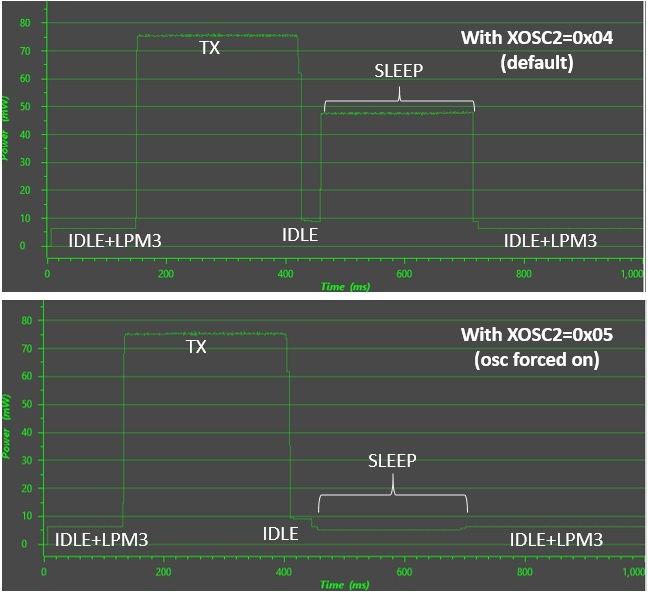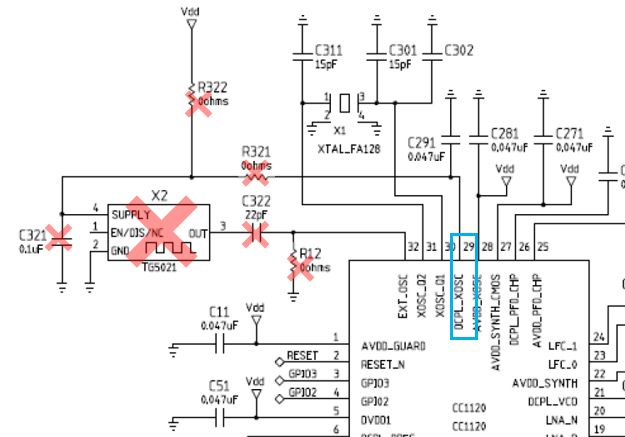Other Parts Discussed in Thread: ENERGYTRACE, MSP430FR2355
Ok, I have a CC1125 on a custom PCB based on swrr107a. It uses a 40Mhz crystal; EXT_OSC is tied to ground. It's connected via SPI to an MSP430FR dev board. I've based my code on the "easy link tx" code and configured the registers appropriately using SmartRF. Transmitting works as expected and I can receive data reliably on another device. Power consumption in TX, RX, IDLE as measured via energy-trace is as expected.
The problem comes when I issue the SPWD strobe. As soon as that strobe is sent, power consumption rises to 40 or even 80mW which is even higher than during transmit! If I pull CS low again after that, the chip returns to IDLE and power consumption drops back to normal levels. On a whim, I tried the SXOFF strobe and noticed that it had the same effect of increasing power consumption. So I set XOSC_CORE_PD_OVERRIDE to 1 (to force the crystal on) and then tried SPWD again. In this configuration I do not observe the excess power consumption, but it's obviously not as low as it would be if the XOSC was off. It seems that shutting down the crystal is causing excessive power consumption. I'm not talking about a couple uA... I'm seeing >20mA.
What is happening here? I've seen at least one other post here with the same problem, but that one was unresolved. Let me know what you want to see and I'll post it.



